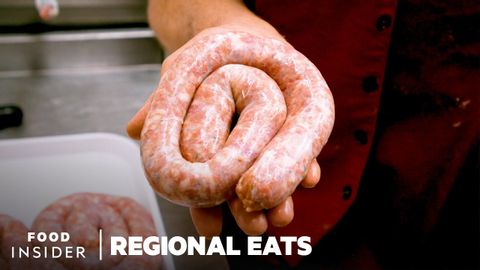イギリス伝統のカンバーランドソーセージができるまで|Regional Eats. (How Traditional Cumberland Sausages Are Made In England | Regional Eats)
林宜悉 が 2022 年 06 月 18 日 に投稿  この条件に一致する単語はありません
この条件に一致する単語はありませんUS /ˈkɑnˌtɛnt/
・
UK /'kɒntent/
- adj.満足している;満足した
- n. (c./u.)内容;主題;コンテンツ;満足;コンテンツ;含有量
- v.t.満足させる
- v.i.同意する
US /ɪmˈpruv/
・
UK /ɪm'pru:v/
US /ˈrændəm/
・
UK /'rændəm/
US /ˌkɑmbəˈneʃən/
・
UK /ˌkɒmbɪ'neɪʃn/
- n.コンビネーションロック;組み合わせ;組み合わせ;組み合わせ;結合
エネルギーを使用
すべての単語を解除
発音・解説・フィルター機能を解除
